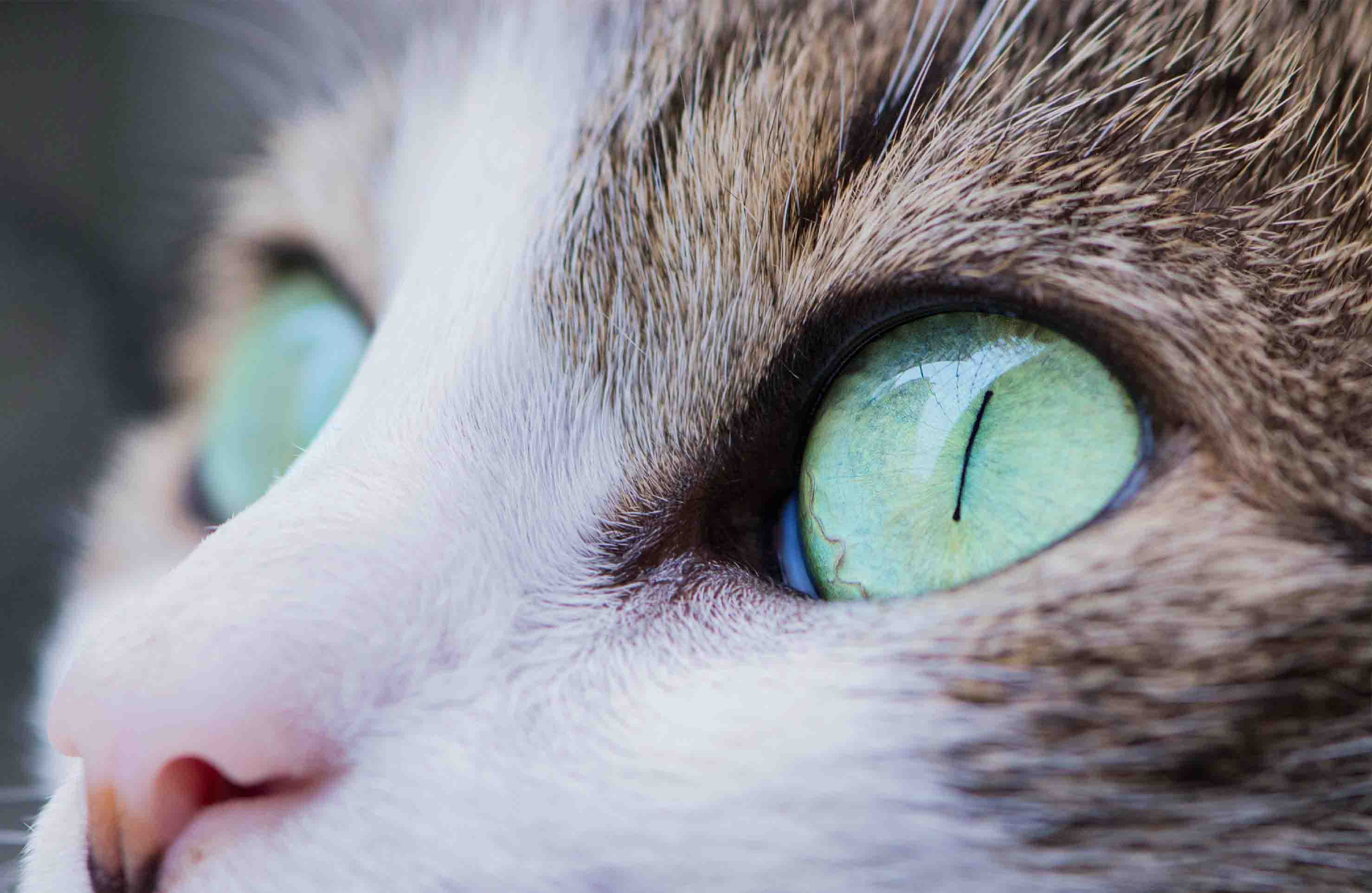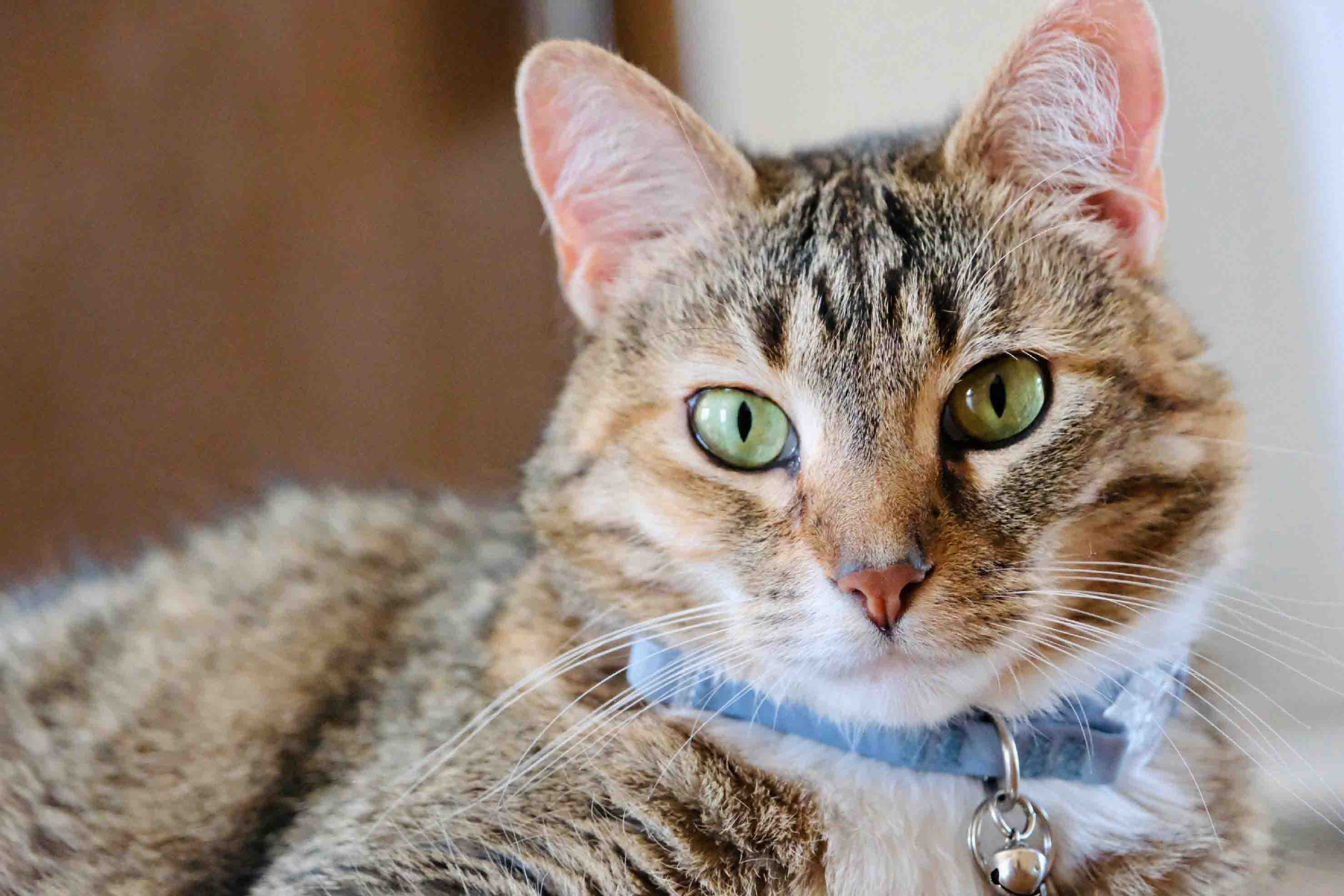

Conjunctivitis in cats, sometimes referred to as conjunctivitis, is an eye disease many cats will experience at some point in their lives. Just like in humans, this common eye condition can make your furry friend uncomfortable, but the good news is that it's treatable.
Understanding the condition can make a big difference in keeping your cat healthy and comfortable. Let's explore what causes conjunctivitis in cats, signs to look out for and what you can do to help.
Conjunctivitis is inflammation of the conjunctiva — a clear, thin membrane covering the inside of the eyelids and the eyeball itself. Dogs and humans also have this characteristic. In all species, it's designed to provide moisture to the eyeball, keep out foreign objects, and deliver germ-fighting cells within tears to ward off infection.
Unfortunately, things don't always go according to plan. A number of conditions can cause the conjunctiva to become inflamed, which can turn into conjunctivitis. When inflammation sets in, blood vessels in the conjunctiva dilate, which causes redness and even swelling. A number of additional physical signs can be seen as this painful condition progresses.
According to Cornell University, conjunctivitis is the most common of all eye disorders in cats. Fortunately, this means that treatment is readily available, and your veterinarian is well-trained in how to get your cat feeling more comfortable.

Though the signs of conjunctivitis are often fairly straightforward, the same signs can indicate other eye conditions, so it's important to get an accurate diagnosis from your vet. Keep in mind that you may see signs of infection in either one or both eyes. These include:
Eye redness
Swelling of the eyelids or conjunctiva
Frequent tears
Eye discharge, which can range from watery to white, yellow or green
Squinting of the eye(s) and/or inability to fully open the eye
Rubbing at the eye(s)
Signs of an upper respiratory infection (sneezing, nasal discharge, decreased energy, decreased appetite)
How Do Cats Get Conjunctivitis?
There are a number of ways cats can contract conjunctivitis, which can be either infectious or non-infectious. Of the infectious causes, viruses and bacteria are the most frequently occurring causes, though parasites can also cause the condition. Allergies and irritants are common non-infectious causes of conjunctivitis, as well.
Viral Causes
Feline herpesvirus-1 (FHV-1) is a common cause of conjunctivitis, and is especially considered in chronic or recurrent flare-ups. This virus is specific to cats and causes flare-ups during stress or illness. FHV-1 is highly contagious to other cats in close contact and is considered widespread among cats.
Calicivirus is another common virus in cats, is highly contagious, and causes conjunctivitis. While some cats recover and clear the virus, other cats may become lifelong carriers of the virus.
Bacterial Causes
Oftentimes, cats with conjunctivitis can develop a secondary bacterial infection, often associated with opaque tan to yellow-green eye discharge, though bacteria can also be the primary agent involved in conjunctivitis in cats.
Mycoplasma and Chlamydophila are two of the more commonly seen causative bacterial pathogens.
Parasitic Causes
Less frequently, parasites may be responsible for conjunctivitis in cats. Certain worms, such as Thelazia sp. (sometimes called eye worms) can migrate to the eye and even the conjunctiva itself, causing inflammation and disease, according to Merck Veterinary Manual. Parasitic causes of conjunctivitis are more often seen in outdoor cats.
Allergies and Other Causes
Allergies are a common cause of conjunctivitis for many cats, but it can be tricky to isolate the specific allergen. Some common allergens to cats include: dust mites, pollen, pet dander and mold.
The category of physical irritants can range from foreign bodies that don't get cleared with tears or blinking, such as hair or fragments of lawn debris, to irritants, such as harsh chemicals, air fresheners and smoke.
Eye trauma and primary eye diseases can also contribute to the development of conjunctivitis. Even anatomical variations, such as eyelids that turn inwards — called entropion — can lead to the condition.
Your vet will start the exam with a thorough history and then conduct an eye exam using a tool called an ophthalmoscope. This allows your vet to look beyond the surface of the eye, and check for inflammation, masses, or foreign objects. The remainder of the physical exam will give them insight as to whether your cat has any signs of an upper respiratory infection, which can often be associated with conjunctivitis in cats.
Your cat's eye exam may include:
A fluorescein stain test allows your vet to see if there are any corneal ulcers (holes) or scratches on the eye. If your cat does have a corneal ulcer, treatment will need to be more aggressive, as these can progress quickly.
A tear test measures your cat's tear production to rule out a condition called dry eye.
Reading of the pressure inside the eye may be needed to evaluate for glaucoma.
Gentle scrapings of the conjunctiva can help determine the cause of eye infections. This is rarely performed.
Culture of the eye discharge may be needed to identify bacteria, viruses, or fungi. This is also a rare test.
Conjunctivitis in Cats: Treatment, Management and Recovery
Depending upon findings and diagnostics, topical medications, in the form of antimicrobial eye drops or eye ointment, will likely be prescribed. Your vet may also provide topical or systemic pain medications or oral antibiotics as needed. Antivirals may also be prescribed, and your cat may need to wear an e-collar to keep them from scratching and rubbing their eye. If your vet suspects infectious causes, it is important to separate your cat from other household cats and thoroughly wash your hands after interacting with your cat to help prevent the spread of infection. You should also wash any clothes, toys, bedding or other materials they may have come into contact with.
For cats with recurrent conjunctivitis, providing extra immune support may be helpful to reduce outbreaks. Supplementing with probiotics and L-lysine (an amino acid believed to slow the replication of FHV-1 and boost immune support) may help to lessen some of the signs associated with conjunctivitis due to FHV-1. Feeding them a complete and balanced food is helpful in keeping your cat's overall health in good shape. Talk to your vet about the best nutrition for your cat.

Many cats will experience conjunctivitis at some point in their life. Kittenhood is a common time for the ailment, as kittens' immune systems are not fully developed, and they are in close quarters with one another. If you do have a cat who develops signs of conjunctivitis, your vet may advise you to gently wipe their eyes with a warm, moistened soft rag several times daily.
Here are some tips to help prevent conjunctivitis in cats:
Ensure your cat or kittens receive their proper vaccines. One of the primary vaccines, known as the FVRCP vaccine, protects against FHV-1 and feline calicivirus.
Keep cats indoors to prevent exposure to contagious forms of conjunctivitis spread by other cats.
Separate cats diagnosed with infectious conjunctivitis, if you have a multi-cat household. Remember, conjunctivitis is most often seen in catteries and environments with multiple cats.
Ensure you are feeding a complete and balanced food.
Keep your cat's stress levels lower with environmental enrichment toys, a quiet place to retreat when stimulation is high, and plenty of individual attention. If your cat is showing signs of conjunctivitis, stress, or other illness, it's best to give your vet a call.
Can humans catch cat conjunctivitis?
It is incredibly rare for humans to catch conjunctivitis from cats. Infectious organisms that cause conjunctivitis in cats are typically species-specific--meaning they are only infectious to cats. However, there have been rare occurrences reported so it is best to be safe and practice good hygiene.
Can cats get conjunctivitis from humans?
Good news again! The infectious agents that cause conjunctivitis in humans are not frequently associated with conjunctivitis in cats.
Is conjunctivitis contagious in cats?
Whether or not it's contagious depends on the cause. Infectious causes of conjunctivitis in cats are often quite contagious, especially viral causes. Allergic causes of conjunctivitis are never spread from cat to cat, though if there is an unusual allergen present, such as during a house renovation project or pollen season, more than one cat in the household may be affected.
Does conjunctivitis in cats go away on its own?
Depending upon the cause of the conjunctivitis and the severity, conjunctivitis in cats can sometimes resolve on its own, but it certainly isn't guaranteed to. While your cat has conjunctivitis, not only is it painful, but they are also more likely to develop secondary infections in the affected eye. If your cat does have squinting, swelling, or eye discharge, it's best not to wait it out at home and instead seek veterinary care, as other eye conditions can present with similar signs and can be quite serious, such as glaucoma or corneal ulcers. Your vet will help determine what condition is causing your cat's symptoms.
How long does conjunctivitis in cats last?
Most instances of conjunctivitis will clear up within one to two weeks. Prescription medications will help speed up the recovery, as well as provide pain relief during the healing process.




















